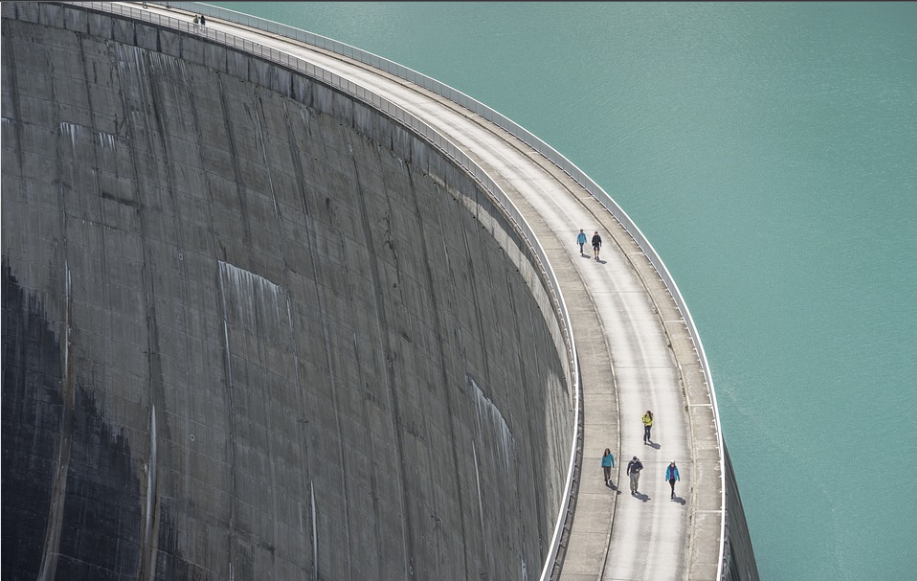dams
The culture of dam building has been known since ancient times, but it has developed a lot in the recent period, and the number of dams has increased in different parts of the world, and based on their importance, different countries in the world have begun to build. They ran and competed in their creation, and despite the high cost of material changes, the nature during its construction, and their daughters exposed to many dangers during the construction operations, but this did not prevent its construction; As it provides clean hydroelectric power, it produces electricity that overlooks the use of oil and coal to generate electricity, and it also greatly reduces the problem of environmental pollution.
Definition of dam
A dam is defined as an engineering building constructed for the purpose of collecting and holding water. Dams are classified according to their shape, the materials used in their construction, and the purpose of their construction. Its facade is made of concrete with protective beams.
The Three Gorges Dam was built at the expense of many scenic sites in China; More than a thousand archaeological sites were flooded for its construction, and nearly a hundred towns and colonies were destroyed, forcing nearly 1. 24 million people to flee from their places of residence to build this great dam. In the event of a collapse, it is expected to claim the lives of millions of residents living near it, an estimated 360 million people.
It is built of concrete and steel. About 510,000 tons of steel were used in it. It is believed that this amount is enough to build the Eiffel Tower 60 times. The dam's reservoir area is 405 square miles. This contributes to the arrival of large quantities of ocean waters to it, and prevents the occurrence of torrential rains in that area. The cost of building the dam was about 30 billion dollars from the beginning of the work until its completion.
The purpose of building the Three Gorges Dam
- Power generation: 84.6 billion kWh of power is generated from this dam, which is clean hydro or hydroelectric power that does not pollute the environment, making China less dependent on using polluting coal for power generation.
- Flood reduction: There have been many floods in China throughout history, especially in the Yangtze River, which claimed thousands of lives, caused great losses and severe damage, and the dam controls nearly 22. 15 billion cubic meters of water. water, and these boundaries occur in floods.
- Tourism: The Three Gorges Dam is the largest hydraulic or hydraulic dam in the world, which has made it a magnet for tourists from all over the world.
The world's largest dams
The Three Gorges Dam is the largest dam in the world, and there are many huge dams in different places around the world, and they are arranged from the largest to least massive as follows:
- Itaipu Dam: It is surpassed only by the Three Gorges Dam. It was built in Brazil. With the aim of generating enough hydroelectric power for its inhabitants.
- Paraná River, which is ranked as the seventh largest river among the world's rivers, and is located on the borders of Paraguay. The length of the dam is 7,979 m and its height reaches 196 m, and its water tank has a capacity of 29 billion cubic meters of water.
- Hoover Dam: The Hoover Dam is located in the United States and ranks third in terms of its magnitude. The Hoover Dam was built on the Colorado River between Nevada and Arizona counties. Its construction began in 1931 and ended in 1935.
- Akosombo Dam: The Akosombo Dam is located in African Ghana. Its construction began in 1965 AD on the Volta River, with a height of 134m and a length of 700m. Its main objective, as in the rest of the dams that preceded it, was to produce hydroelectric power.
- Grand Dickson Dam: The Grand Dickson Dam in Switzerland is located in the Alps, where the waters of It has a storage capacity of 4 million cubic meters of water, a height of 285 meters, and the length of the tunnels is more than 100 km .
- North Sea Dam: The North Sea Dam is located in the Netherlands. The main purpose of its construction was to deal with the floods of the North Sea and protect the land from them, since most of the Dutch territory is located at a level below sea level. This dam has steel gates that open under normal conditions.
- Ataturk Dam: The Ataturk Dam is located in Turkey on the Euphrates River in southeastern Anatolia. It was built in 1992 and has a height of 184 m and a length of 1820 m. It has a storage capacity of about 48 billion cubic meters of water. It ranks as one of the largest dams in the world with a production capacity of 2,400 MW. of electrical energy per hour; It includes eight turbines that generate electrical energy.
- Brisa de Almandra: The Almendra Dam is located in Spain on the Tormes River. It was founded in 1970 and has a height of 202 m and a length of 667 m. It is 1,300 meters long and 16 meters high. Its water storage capacity is about 135,000 million cubic metres. Its electricity production is estimated to be about 70% of Venezuela's energy needs.
- Bennett Dam: Bennett Dam is located in Canada. It is one of the Canadian dams. It was built in 1968, with a height of 186 m and a length of 2,086 m. Canadian dams provide Canada with about 62% of its electrical energy needs.



Comments
Post a Comment